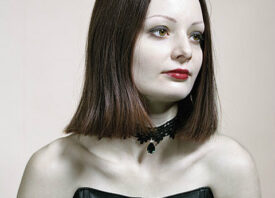Search this site
Celebrating the Life and Legacy of Madame d’Ora, One of the 20th Century’s Leading Woman Photographers


Following her death in 1963, Dora Kallmus, the photographer who went by the name Madame d’Ora fell into obscurity for decades. It is only now with the work of curator and author Dr. Monika Faber that the life and legacy of one of the twentieth century’s foremost woman photographers rises again.
In the new book and exhibition, Madame d’Ora, Dr. Faber introduces us to the extraordinary life of Kallmus. Born into privilege in 1881, Kallmus came of age in fin-de-siècle Vienna. At the age of 23, while on a trip to the Côte d’Azur, Kallmus purchased her first camera, a Kodak box camera, and fell in love with photography.
Determined to become a professional photographer, Kallmus began her career studying with Nicola Perscheld in Berlin. In May 1906, she adopted the name Madame d’Ora and became a commercial artist. She became the first woman to open a studio in Vienna, Atelier d’Ora, in 1907. The following year, her father used his connections to secure Gustav Klimt would sit for d’Ora’s first portrait and Viennese society quickly took note
D’Ora set to work making portraits of her friends, which she gathered together in 1909 for her first exhibition of some 100 prints, which received critical acclaim and catapulted her into stratosphere. In 1916 d’Ora photographed the coronation of Emperor Charles I of Austria, and went on to photograph members of the Habsburg family and Viennese aristocracy, the Rothschild family, Wiener Werkstätte fashion models and the designer Emilie Flöge of the Schwestern Flöge salon wearing artistic reform dresses.
Despite her success, d’Ora was forced to maneuver her way through the intricacies of society, which forbid women from undergoing high level technical training. Despite sexism, d’Ora persevered, developing an extraordinarily successful business. She moved to Paris in 1925 and quickly began to make photographs of the haute monde, her sitters including the most luminous fitures of the day including Josephine Baker, Tamara de Lempicka, Marc Chagall, Gabrielle Chanel, and Maurice Chevaliier.

But the fates of fortune would be unkind when Hitler seized control of Paris in 1940. Born a Jew, d’Ora converted to Catholicism, but that did not save her from the Nazis; she was forced to close her studio and flee. She spent the war years hiding on a farm in the Ardèche in the southeast of France; her family, who stayed in Vienna, perished.
After the war, d’Ora returned to Paris and resumed her career, but the harrowing shadow of trauma haunted her work. In 1948, she began photographing refugee camps for the United Nations, focusing her lens on the old, the young, and the sick. She then set forth to make portraits of Jews who returned home to Salzburg and Vienna after surviving the horrors of an Austrian concentration camp.
In 1949, at the age of 68, d’Ora embarked on what she called “my big final work,” photographing the grisly scenes of slaughter in Parisian abattoirs. Her gory scenes of mutilation and death were accompanied by a profound sense of humanity for the suffering of the innocent creatures who lose their lives to the whim of man, a metaphor for the plight of Jews during Hitler’s reign.
As Jean Cocteau aptly observed in 1958, “Madame d’Ora, fanned by the wing of genius, strolls in a labyrinth whose minotaur goes from the Dolly Sisters to the terrible bestiary of the slaughterhouses—where this ageless woman, more lucid than any young man, brushes the killers aside with a gesture and sets up her camera in their stead in front of the daily sacrifice of our carnivorous cult.”




All images: Courtesy of Neue Galerie, New York.

